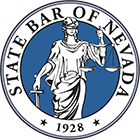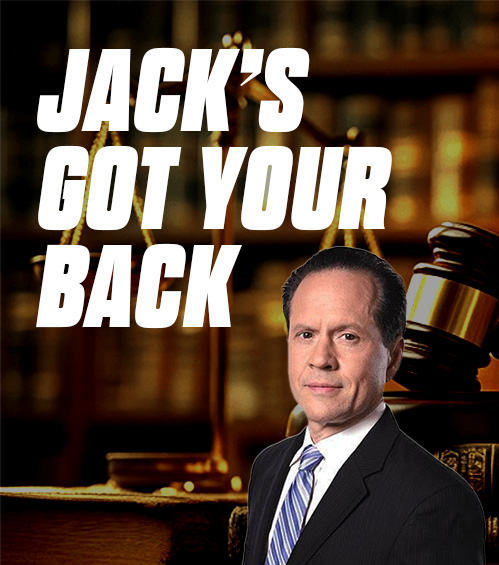A drowning or near-drowning incident is a sudden, devastating event that can leave families in Las Vegas facing unimaginable grief and a complex future. When such a tragedy occurs at a hotel pool, residential complex, or private property, questions about safety failures and legal rights demand immediate answers. Understanding your options and securing experienced legal guidance is a critical first step during this incredibly difficult time.
For 40 years, Jack Bernstein has stood by victims of negligence, offering the skilled representation needed to navigate these challenging cases. If you or a loved one has been affected by a drowning accident, we are here to help you understand the path forward.
Why Hire Jack Bernstein Injury Lawyers?

Jack G. Bernstein, Esq. has been protecting the rights of injured victims and their families for over 40 Years.




What Our Clients Say
I had a fantastic experience with Jack Bernstein injury attorney firm! The team was incredibly smart and supportive, guiding me through every step of my case. Their expertise and dedication made a significant difference in the outcome of my situation. I truly appreciate their assistance and highly recommend their services to anyone in need of a top-notch injury attorney.
– Ashley Sonson
Understanding Drowning and Near-Drowning Incidents in Las Vegas
When a fun day at the pool takes a tragic turn, the world stops. Drowning and near-drowning incidents are devastating, leaving families in Las Vegas grappling with immense sorrow and a sudden rush of overwhelming questions. These aren’t just accidents; they are often preventable events that occur in places meant for enjoyment, like hotel pools, community swimming areas, or even residential pools. In the aftermath, knowing where to turn and what your rights are can feel impossible, but understanding the landscape is the first step toward finding clarity and support.
The Sobering Reality in Nevada
While Las Vegas is known for its vibrant attractions, the prevalence of pools at resorts, hotels, apartment complexes, and private homes also brings a heightened risk of water-related incidents. Official reports from health authorities and safety organizations periodically highlight the dangers, especially for vulnerable groups like young children. These events aren’t just statistics; they represent profound personal losses and life-altering injuries that ripple through our community.
Immediate Questions and Complex Legalities
After a drowning or near-drowning, families are often thrust into a world of confusion and urgent concerns. You might be wondering:
- What exactly happened, and who is responsible?
- Were there safety measures that should have been in place but weren’t?
- How will we cope with medical bills or funeral expenses?
- What are our legal options, and is there a time limit to act?
- If a child was involved, does that change how responsibility is viewed?
These questions are valid and common. The legal aspects surrounding drowning incidents can be intricate, often involving premises liability law, local safety codes, and specific standards of care that property owners or operators must follow.
Why Specialized Legal Guidance is Crucial
Navigating the aftermath of a drowning or near-drowning requires more than just general legal knowledge. These cases often hinge on specific details:
- Understanding of Pool Safety Standards: Clark County has particular regulations for pool fencing, barriers, safety equipment, and supervision, especially for commercial properties.
- Investigative Resources: Pinpointing negligence might involve examining maintenance logs, security footage (if available and preserved), and witness accounts.
- Dealing with Insurers: Property owners and their insurance companies often have experienced legal teams focused on minimizing liability.
An attorney with specific experience in Nevada drowning and premises liability cases can help you understand these complexities, protect your rights, and determine the most appropriate course of action during such a profoundly difficult time.
Common Causes of Drowning Accidents & Identifying Liable Parties in Nevada
Tragically, many drowning and near-drowning incidents are not simply unavoidable accidents but are often the result of preventable safety failures. Nevada law outlines clear responsibilities for property owners and operators to maintain safe swimming environments. When these duties are neglected, and someone is harmed, those responsible can be held legally accountable. Understanding common hazards and who might be liable is key to navigating your options. This often comes down to proving negligence – showing that a property owner failed in their duty to provide a reasonably safe environment, and that failure directly led to the incident.
Hotel and Resort Pool Liability in Las Vegas
Given the number of tourists and locals who use pools at Las Vegas hotels and resorts, these commercial establishments are held to a high standard of care. They have a legal obligation to take active steps to ensure guest safety.
- Clark County Regulations: Specific safety rules govern commercial pools in our area. These regulations cover aspects like proper barriers and fencing, necessary safety equipment (like rescue poles and life rings), and, in some cases, the presence of lifeguards or adequate supervision plans.
- Common Safety Violations: When these standards are not met, the risk of a tragic incident increases significantly. Some frequently seen violations include:
- Inadequate or poorly maintained fencing and gates that fail to prevent unsupervised access, especially by children.
- Missing or broken safety equipment, such as life preservers, shepherd’s hooks, or emergency phones.
- Lack of proper supervision, particularly in large, busy resort pools where a lifeguard’s attention can be critical.
- Malfunctioning or improperly covered drains (Virginia Graeme Baker Pool & Spa Safety Act compliance is crucial).
- Poor lighting in and around the pool area, making hazards difficult to see, especially at night.
- Slick or uneven walking surfaces around the pool, leading to slips and falls into the water.
Common Types of Safety Lapses Seen in Las Vegas Hotel Pools
While every situation is unique, certain types of safety oversights unfortunately recur. For instance, a hotel might fail to repair a broken self-latching gate to the pool area, or a resort might not have enough lifeguards on duty for the number of guests using a wave pool. Another example could be a pool where the depth markers are unclear or missing, or where life-saving equipment is locked away or in disrepair. These lapses can turn a recreational spot into a serious hazard.
Potentially Liable Parties at Commercial Properties
Determining who is responsible can be complex, as multiple entities might share liability:
- The hotel or resort owner.
- The property management company tasked with daily operations and safety.
- Third-party pool maintenance or service contractors responsible for upkeep and repairs.
Residential and Private Pool Drowning Liability
Drowning risks aren’t limited to commercial properties. Homeowners, landlords, and community associations also have responsibilities when it comes to pools on their properties.
- Premises Liability for Homeowners and Landlords: Nevada law requires private property owners to maintain a reasonably safe environment for visitors and tenants. This includes taking steps to prevent foreseeable accidents at residential pools.
- HOA and Apartment Complex Responsibilities: For community pools in housing developments or apartment complexes, the Homeowners Association (HOA) or property management typically bears responsibility for ensuring safety, including compliance with local codes, proper maintenance, and adequate warnings.
- Pool Barrier and Safety Requirements: Clark County has specific requirements for private pools concerning:
- Fencing and Barriers: Adequate fencing with self-closing, self-latching gates is often mandatory to prevent young children from wandering into the pool area unsupervised.
- Pool Covers and Alarms: While not always mandated for every private pool, safety covers and pool alarms (on doors leading to the pool or in the pool itself) are crucial safety layers.
It’s important to note the “attractive nuisance” doctrine, a legal concept particularly relevant when children are involved in pool accidents on private property. This doctrine will be discussed in more detail in the section on child drowning cases, as it imposes a special responsibility on property owners when features on their land might attract and endanger children.
Special Considerations in Child Drowning and Near-Drowning Cases
Incidents involving children in and around water are among the most heartbreaking. Nevada law recognizes the unique vulnerabilities of children and, as a result, often imposes a higher duty of care on property owners when children are foreseeably present near hazards like swimming pools. Understanding these special legal considerations is vital for families seeking accountability.
When a child is the victim, the investigation into what happened and who is responsible often looks closely at whether reasonable steps were taken to protect young ones who might not fully understand the dangers a pool presents.
The “Attractive Nuisance” Doctrine in Nevada
A key legal principle in child injury cases, especially those involving pools, is the “attractive nuisance” doctrine. This doctrine applies when:
- A property owner has a condition or feature on their property (like a swimming pool) that they know or should know is likely to attract children.
- They know or should know that this condition poses an unreasonable risk of serious injury or death to children.
- Children, because of their youth, do not discover the condition or realize the risk involved in intermeddling with it or in coming within the area made dangerous by it.
- The utility to the owner of maintaining the condition and the burden of eliminating the danger are slight as compared with the risk to children involved.
- The owner fails to exercise reasonable care to eliminate the danger or otherwise to protect the children.
Essentially, if a pool is not properly secured and could foreseeably lure a child onto the property and into danger, the property owner may be held liable, even if the child was technically trespassing. This is why robust fencing, self-locking gates, and other safety barriers are so critical for any pool owner.
Parental Supervision and Liability
In some child drowning cases, property owners or their insurance companies may attempt to shift blame by arguing that the child’s parents were negligent in their supervision. While parental supervision is always important, Nevada law evaluates the actions and responsibilities of all parties involved.
- Comparative Negligence: Nevada follows a “modified comparative negligence” rule. This means that if a parent (or the child, depending on their age and understanding) is found partially at fault, it doesn’t necessarily prevent recovery of damages, as long as their share of fault is not 50% or greater (if it’s 51% or more, recovery is barred). The percentage of fault attributed to a parent might reduce the total compensation awarded.
- Property Owner’s Duty Remains: Even if there are questions about supervision, the property owner’s fundamental duty to maintain a safe premises and comply with safety laws (like fence requirements) still exists. A property owner’s negligence in failing to secure a pool, for example, can be a primary cause of an incident, regardless of momentary lapses in supervision.
Understanding how these factors interact requires careful legal analysis of the specific circumstances of the incident. The focus often remains on whether the property owner upheld their heightened responsibility to protect children from known dangers on their property
Proving Negligence in Nevada Drowning Accident Claims
When a drowning or near-drowning occurs due to unsafe conditions, holding the responsible party accountable typically means proving “negligence” under Nevada law. This isn’t just a casual term; it has a specific legal meaning. Successfully pursuing a claim requires demonstrating that a property owner or operator failed in their legal duty to maintain a reasonably safe environment, and this failure directly caused the devastating incident. Establishing these elements is the foundation of a personal injury or wrongful death claim.
To prove negligence, four key elements must be established:
- Duty: The property owner or operator had a legal obligation (a “duty of care”) to maintain the pool and surrounding area in a reasonably safe condition for people who were foreseeably expected to be there. For commercial properties like hotels, this duty is often higher. For all pool owners, this includes adhering to relevant safety laws and regulations, such as those concerning barriers and equipment.
- Breach: The property owner or operator failed to meet this duty of care. This “breach” could be an action they took (like removing a safety feature) or an omission (like failing to repair a broken gate, provide adequate supervision, or warn of a known hazard).
- Causation: The breach of duty must be the direct and proximate cause of the drowning or near-drowning incident. This means showing a clear link between the safety failure and the harm suffered. For example, if a faulty drain cover led to an entrapment drowning, causation would link the specific defect to the tragic outcome.
- Damages: The victim or their family must have suffered actual harm or losses as a result of the incident. These “damages” can include medical expenses, lost income, funeral costs, pain and suffering, emotional distress, and loss of companionship in fatal cases.
Investigating Drowning Cases and Gathering Critical Evidence
A thorough investigation is paramount to uncover the facts and gather the evidence needed to prove these four elements. The type of evidence can vary widely depending on the circumstances, but often includes:
- Security Camera Footage: If available, video from security cameras can provide an objective record of the incident or the conditions leading up to it. Prompt action to preserve this footage is essential, as it’s often overwritten.
- Pool Maintenance and Inspection Records: These logs can reveal whether the pool was regularly inspected, if safety equipment was maintained, chemical balances were appropriate, and if any previous issues were reported or addressed. Staff certifications and training records can also be relevant.
- Expert Testimony: Specialists in aquatic safety, premises liability, or medical professionals can provide crucial insights. For example, an aquatic safety expert might analyze whether pool operations met industry standards, or a doctor might explain the long-term consequences of a near-drowning.
- Witness Statements: Accounts from anyone who saw the incident, noticed unsafe conditions beforehand, or participated in rescue efforts can be invaluable. First responder reports (police, paramedics) also provide official documentation of the scene and initial findings.
- Violations of Codes and Standards: Evidence that the property owner violated specific Clark County safety codes, Nevada state laws, or recognized industry safety standards (like those from the Pool & Hot Tub Alliance or the Virginia Graeme Baker Pool & Spa Safety Act) can be strong indicators of a breach of duty.
How Jack Bernstein Injury Lawyers Investigates These Complex Cases
At Jack Bernstein Injury Lawyers, we understand that a successful claim depends on a meticulous and proactive investigation. We work to uncover all relevant facts, identify all responsible parties, and build the strongest possible case for our clients. This involves promptly seeking to preserve crucial evidence, engaging qualified experts when necessary, and diligently analyzing all aspects of the incident against applicable laws and safety standards. Our goal is to ensure that the full story is told and that negligence is clearly demonstrated.
Compensation for Drowning and Near-Drowning Victims in Las Vegas
While no amount of money can ever truly compensate for the immense loss or life-altering injuries resulting from a drowning or near-drowning incident, Nevada law provides a way for victims and their families to seek financial recovery for the harms they have endured. This compensation, known legally as “damages,” aims to address the tangible and intangible losses caused by another party’s negligence. The specific types of damages that may be available depend on the circumstances, including whether the incident was fatal or resulted in non-fatal injuries.
Fatal Drowning Claims (Wrongful Death)
When a drowning results in death, the surviving family members may be able to file a wrongful death lawsuit. Nevada’s wrongful death statute (NRS 41.085) outlines who is eligible to bring such a claim—typically the deceased person’s spouse, domestic partner, children, or parents. If none of these individuals exist, other relatives who were dependent on the deceased might be able to file.
The purpose of a wrongful death claim is to compensate the surviving family members for their own losses resulting from the death. Recoverable damages can include:
- Funeral and Burial Expenses: The reasonable costs associated with laying a loved one to rest.
- Loss of Financial Support: The income and benefits the deceased would have provided to the family had they lived. This can include lost wages, loss of inheritance, and the value of household services.
- Loss of Companionship, Society, and Comfort: Compensation for the loss of the deceased’s love, affection, guidance, moral support, and consortium. This is a non-economic damage that acknowledges the profound personal void left by the death.
- Grief or Sorrow of the Heirs: Nevada law specifically allows heirs to recover damages for their grief or sorrow.
- Pain and Suffering of the Deceased (Survivor Action): In some instances, a separate claim (often joined with the wrongful death action) can be made for any conscious pain and suffering the deceased experienced before their death.
Near-Drowning Injury Claims
When a person survives a near-drowning incident, they often face a long and challenging road to recovery, with potentially severe and lifelong consequences. The goal of compensation in these cases is to cover both current and future needs arising from the injuries.
Long-Term Medical Consequences: Near-drowning can lead to devastating injuries, particularly due to oxygen deprivation (hypoxia or anoxia). This can result in:
- Brain Damage: From mild cognitive impairments to severe, permanent brain damage affecting physical and mental functions.
- Lung Damage: Including conditions like Acute Respiratory Distress Syndrome (ARDS).
- Other Organ Damage: Affecting the heart, kidneys, or other vital organs.
- Psychological Trauma: Including PTSD, anxiety, and depression for the survivor.
Recoverable Damages in Near-Drowning Cases: Compensation can cover a wide range of losses, such as:
- Medical Expenses: All current and anticipated future medical costs, including emergency treatment, hospital stays, surgeries, medications, doctor visits, and rehabilitative therapies (physical, occupational, speech).
- Lost Wages and Earning Capacity: If the survivor is unable to work, or their ability to earn an income is diminished, compensation can cover these lost earnings, both past and future.
- Life Care Planning Costs: For catastrophic injuries requiring long-term or lifelong care, a life care plan can detail the anticipated future medical and personal care needs and their associated costs. This might include attendant care, specialized equipment, home modifications, and ongoing therapies.
- Pain and Suffering: Compensation for the physical pain, emotional distress, and mental anguish endured by the survivor.
- Loss of Enjoyment of Life: If the injuries prevent the survivor from participating in activities and hobbies they once enjoyed, or impact their ability to live independently.
Factors Influencing Settlement Values
The amount of compensation in any drowning or near-drowning case can vary significantly based on numerous factors. It’s important to understand that there’s no fixed formula. Some key factors include:
- The severity of the injury or the circumstances of the death.
- The clarity of who was at fault (liability) and the strength of the evidence.
- The amount of available insurance coverage held by the liable parties.
- The age, health, and earning capacity of the victim.
- The extent of economic losses (medical bills, lost income).
- The impact on the victim’s and family’s quality of life.
- The jurisdiction and applicable Nevada laws.
An experienced attorney can evaluate these factors in the context of your specific situation to help you understand the potential range of compensation.
Navigating the Legal Process for Nevada Drowning Claims
Pursuing a legal claim after a drowning or near-drowning incident involves a series of steps, critical timelines, and important decisions. While each case is unique, understanding the general legal process in Nevada can help you feel more prepared and less overwhelmed. From initial deadlines to dealing with insurance companies and deciding whether to settle or go to trial, knowing what to expect is key.
Critical Legal Deadlines in Nevada
Time is a critical factor in any legal claim. Nevada law sets specific deadlines, known as statutes of limitations, for filing lawsuits. Missing these deadlines can mean losing your right to seek compensation, regardless of the strength of your case.
- Statute of Limitations: For most personal injury and wrongful death claims in Nevada, including those arising from drowning incidents, the lawsuit must generally be filed within two years from the date of the injury or death.
- Special Notice Requirements for Government Entities: If the drowning occurred at a facility owned or operated by a government entity (e.g., a municipal pool), there are often much shorter notice requirements. Claimants may need to provide formal notice of the claim to the government agency within a very limited timeframe (sometimes as short as 180 days) before a lawsuit can even be filed. Failing to meet these strict notice rules can bar the claim.
It’s crucial to consult with an attorney as soon as possible to ensure all applicable deadlines are identified and met.
The Claims Process at a Glance
While the specifics can vary, the legal process for a drowning claim generally follows these stages:
- Initial Consultation and Case Investigation: You’ll discuss the details of the incident with an attorney. If you decide to work together, the attorney and their team will conduct a thorough investigation to gather evidence, identify liable parties, and assess the damages.
- Filing a Claim/Notifying Parties: Your attorney may send a formal notice of claim to the responsible parties and their insurance companies. If a lawsuit is necessary, it will be filed with the appropriate court.
- Discovery: This is the formal process where both sides exchange information and evidence relevant to the case. It can involve written questions (interrogatories), requests for documents, and depositions (sworn out-of-court testimony).
- Negotiation and Mediation: Throughout the process, there will likely be attempts to negotiate a settlement with the opposing party or their insurer. Mediation, a process where a neutral third party helps facilitate settlement discussions, is also common.
- Litigation and Potential Trial: If a fair settlement cannot be reached, the case may proceed to trial. During a trial, both sides present evidence and arguments to a judge or jury, who will then make a decision on liability and damages.
Dealing with Insurance Companies
Soon after an incident, you may be contacted by insurance adjusters representing the property owner or other potentially liable parties. It’s important to remember their primary goal.
Insurance Adjuster’s Role: An insurance adjuster’s main objective is to protect the insurance company’s financial interests, which often means minimizing the amount paid out on claims.
Be cautious in your interactions:
- Quick, Low Settlement Offers: Insurers may offer a quick, but often insufficient, settlement before the full extent of injuries or losses is known. This can be tempting, especially when facing immediate financial pressures, but accepting such an offer usually means waiving your right to seek further compensation.
- Recorded Statements: Adjusters will likely ask for a recorded statement. While it may seem like a routine request, anything you say can potentially be used against you later to dispute liability or downplay your damages. It’s generally advisable to consult with an attorney before providing any recorded statement.
- Disputing Liability or Damages: Even in cases where fault seems clear, insurers may try to argue that their insured was not responsible or that your injuries or losses are not as severe as claimed.
An attorney can handle communications with insurance companies on your behalf, protecting your rights and ensuring you are not pressured into an unfair agreement.
Settlement vs. Trial Considerations
The vast majority of personal injury and wrongful death claims are resolved through a settlement before reaching a trial. However, the decision to settle or proceed to trial is a significant one, made in consultation with your attorney.
Settlement:
- Pros: Provides a certain and often quicker resolution; avoids the stress, time, and uncertainty of a trial.
- Cons: The settlement amount might be less than what could potentially be awarded at trial.
Trial:
- Pros: Potential for a larger award if successful; a sense of justice for some by having their case heard publicly.
- Cons: No guarantee of winning; can be lengthy, expensive, and emotionally draining; the outcome is ultimately decided by a judge or jury.
The best path depends on many factors, including the strength of your evidence, the defendant’s willingness to negotiate fairly, the complexity of the case, and your personal comfort level with the risks and benefits of each option. Your attorney will provide guidance to help you make an informed decision that aligns with your best interests.
Taking Action: Next Steps After a Las Vegas Drowning Accident
In the aftermath of a drowning or near-drowning incident, emotions are understandably raw, and knowing what to do next can feel overwhelming. While you focus on your family and personal well-being, there are some practical steps you can consider to protect your legal rights and preserve crucial information should you decide to explore your legal options.
Immediate Steps to Protect Your Rights
While every situation is different, taking certain actions promptly can be very important:
- Seek Medical Attention: If it was a near-drowning, ensure the survivor receives comprehensive medical evaluation and care, even if they initially seem okay. Some serious complications can have delayed onset.
- Report the Incident: Notify the property owner, manager, or lifeguard on duty about what happened. If appropriate, ensure an official incident report is filed and try to get a copy. Depending on the circumstances, contacting local authorities might also be necessary.
- Preserve Evidence: If it’s possible and safe to do so, take photographs or videos of the scene, focusing on any conditions you believe contributed to the incident (e.g., a broken fence, missing safety equipment, murky water). Keep any clothing or items worn during the incident in a safe place without washing them.
- Document What Happened: As soon as you are able, write down everything you remember about the incident: the date, time, location, who was present, what you saw or heard, and the sequence of events. Memories can fade, so a contemporaneous record is valuable.
- Limit Discussions: Be very careful about discussing the details of the incident, especially with representatives of the property owner or their insurance company, before you have had a chance to speak with an attorney.
Gathering Important Documentation
As you begin to process what happened, collecting and organizing relevant documents can be extremely helpful for understanding your situation and for any potential legal claim. Consider gathering:
- Any incident reports filed with the property management or other authorities.
- The names and contact information for anyone who witnessed the incident or the conditions at the pool.
- All medical records, bills, and receipts related to the drowning or near-drowning (for ambulance services, emergency room care, hospital stays, doctor visits, therapies, medications).
- Photographs or videos you or others may have taken of the scene, any visible hazards, or injuries.
- Your own notes detailing the events and their impact.
- Any correspondence received from the property owner or insurance companies.
Don’t worry if you don’t have all of these items; your attorney can help you obtain necessary documentation.
Your Free Consultation with Jack Bernstein Injury Lawyers
Understanding your legal rights and options is a critical step. At Jack Bernstein Injury Lawyers, we offer a free, confidential consultation to discuss your situation. This is an opportunity for you to:
- Share the details of what happened in a supportive environment.
- Get your initial questions answered by an experienced Las Vegas personal injury attorney.
- Understand the potential legal avenues available to you without any obligation to hire our firm.
What to Expect and Bring: During the consultation, we’ll listen to your story with compassion and provide an honest assessment of your potential case. If you have any of the documents mentioned above, bringing them can be helpful, but it’s not a requirement. The most important thing is for you to get the information you need.
We handle drowning accident cases on a contingency fee basis. This means you pay no upfront attorney fees. We only get paid if we successfully recover compensation for you. It’s one way we ensure that “Jack’s got your back!” from start to finish, allowing you to focus on healing while we focus on advocating for your rights.
Why Choose Jack Bernstein Injury Lawyers for Your Drowning Accident Case
When you’re facing the profound impact of a drowning or near-drowning accident in Las Vegas, the legal advocate you choose can make a significant difference. These are not just cases; they are deeply personal tragedies that require a combination of legal skill, dedicated investigation, and genuine compassion. At Jack Bernstein Injury Lawyers, we are committed to providing that level of support and representation to families navigating these incredibly difficult circumstances.
Here’s why families in Nevada trust us:
- 40 Years of Dedicated Experience: For four decades, Jack Bernstein has been fighting for the rights of injured individuals and their families. This extensive experience means we have a deep understanding of Nevada’s personal injury laws and court systems.
- Specialized Knowledge: Drowning cases often involve complex issues of premises liability, local safety codes (like those in Clark County for pools), and industry standards for water safety. We have the specialized knowledge required to effectively investigate and pursue these claims, understanding the nuances that can be critical to success.
- Thorough Investigation and Resources: We are committed to a comprehensive approach. This means:
- Meticulously investigating the circumstances of the incident.
- Working with qualified experts, such as aquatic safety specialists, accident reconstructionists, and medical professionals, to build a strong case when necessary.
- Diligently gathering and analyzing all relevant evidence.
- Personalized Attention and Direct Access: We believe in a client-focused approach. Unlike some larger firms where you might rarely speak to your lead attorney, Jack Bernstein emphasizes direct communication and personal attention. We understand you’re going through an immensely challenging time, and we are here to guide you with clarity and compassion. “Jack’s got your back!” is more than a motto; it’s our commitment to you.
- A Commitment to Your Best Interests: Our primary goal is to help you secure the justice and compensation you deserve, allowing your family to focus on healing and rebuilding. We are prepared to aggressively advocate for your rights, whether at the negotiating table or, if necessary, in court.
Choosing an attorney is a significant decision. We invite you to reach out to Jack Bernstein Injury Lawyers to learn more about how we can help. We are here to listen and provide the guidance you need.


